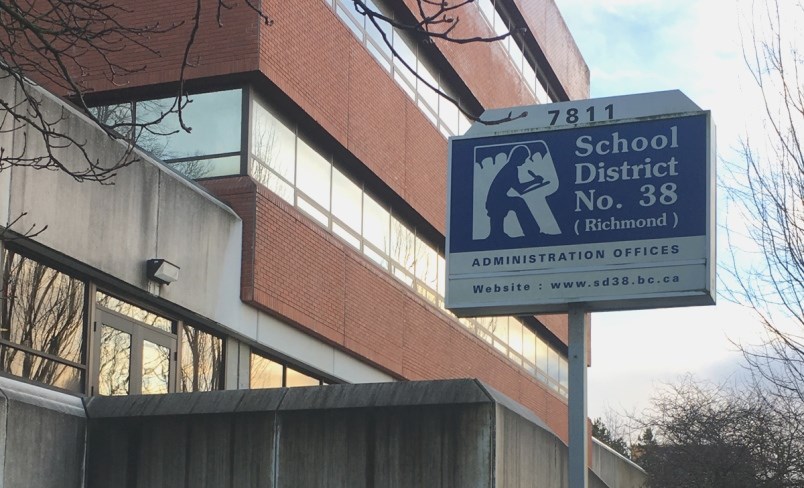Richmond students will be returning to in-class learning on Monday, after the province pushed the start date back amid concerns over the Omicron COVID-19 variant.
Sandra Nixon, chair of the Richmond Board of Education, said the delayed restart gave district staff time to develop safety plans and protocols, including continuity of learning plans in case of a health-related or functional school closure.
She said the goal is to minimize disruption and offer support and stability to students as safely as possible.
“Although everyone is working hard to ensure as smooth a transition as possible back to school next week, there may be some bumps in the road as we all adjust to changes we’ve been asked to make, changing public health approaches, and the uncertainties of where this wave is going,” she said.
Education Minister Jennifer Whiteside joined Provincial Health Officer Dr. Bonnie Henry and Health Minister Adrian Dix on Friday to announce the enhanced safety measures for B.C. schools and the full return to classes.
This includes staggered start times, virtual assemblies and staff meetings, and limiting visitors. Three-layer disposable masks will continue to be available to all students and staff.
Nixon said school plans build upon existing measures such as daily health checks and staying home when sick, and also include preventing crowding during class transition times.
Functional closures may be necessary for a “short while,” she said, if schools don’t have enough staff to provide instruction and supervision.
“In this event, our goal will be to continue offering instruction via at-home learning and to continue to provide critical supports for our most vulnerable students,” said Nixon.
The enhanced safety measures announced on Friday aren’t what the president of the Richmond Teachers Association (RTA) would have liked to see in place.
Liz Baverstock said there are “a lot of questions” surrounding the enhanced safety measures promised by the provincial government.
“I don’t think they’re there,” she said.
Baverstock said she wanted to see N95s and widespread use of rapid tests in place for Monday, and for teachers to have received booster shots in December.
“I’m thoroughly disappointed with the province,” she said.
“Those are the things, to me, when I think what…feasibly could have been done by Monday, because you’re not going to be able to replace an entire ventilation system between Dec. 29 and Jan. 10.”
She said teachers are doing everything they can to protect themselves and their students, often paying out of their own pocket – something that “doesn’t seem to be acknowledged or supported.”
“We understand it’s essential to keep schools open. So what have you done to make sure that that can happen so that we don’t see functional closures?”
Whiteside also announced on Friday that individual case information will no longer be provided, rather, schools will closely monitor attendance levels and report to public health if they fall below “typical rates.”
“That will trigger a response from public health, which may include an investigation, it might include the use of rapid tests to get a better understanding of what’s happening on the ground,” said Whiteside.
The Richmond Board of Education has been “emphasizing the need for clear communication” from Vancouver Coastal Health to help parents and school staff understand the changes and the rationale behind them, said Nixon.
While “nothing’s ideal,” said Baverstock, the measure at least provides some communication and people will know attendance is being watched.
The Richmond Board of Education is also hoping to receive more information about rapid tests soon, which will “hopefully be available to districts to support schools to stay open,” said Nixon.
The district has also been working to improve ventilation “within the limits of (its) systems,” and will continue to explore options for improvements, particularly for spaces that don’t have mechanical ventilation.



